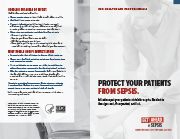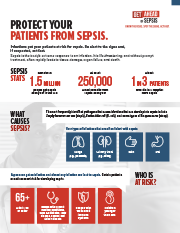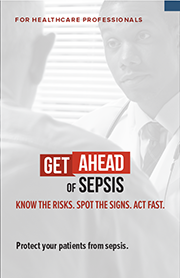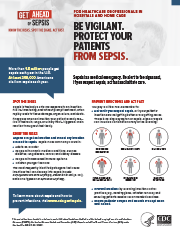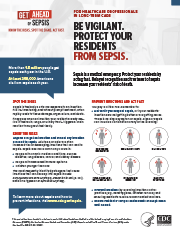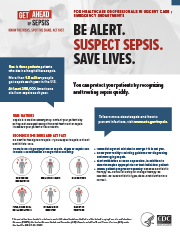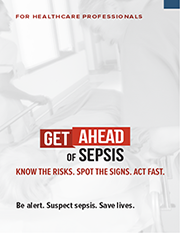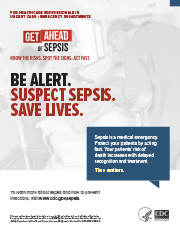Healthcare Professional (HCP) Resources
All Healthcare Professionals
Infections put your patients at risk for sepsis. Be alert to the signs, and if you suspect sepsis, act fast.
Healthcare professionals can:
- Know sepsis signs to identify and treat patients early.
- Act fast if you suspect sepsis.
- Prevent infections by following infection control practices (e.g. hand hygiene, catheter removal) and ensuring patients receive recommended vaccines.
- Educate your patients and their families about:
- Preventing infections.
- Keeping scrapes and wounds clean.
- Managing chronic conditions.
- Recognizing early signs of worsening infection and sepsis and seeking immediate care if signs are present.
Hospitals, Home Care, and Long-Term Care
You can protect your patients by recognizing and treating sepsis quickly.
If you suspect sepsis:
- Immediately alert clinician in charge if it is not you.
- Know your facility’s existing guidance for diagnosing and managing sepsis.
- Start antibiotics as soon as possible, in addition to other therapies appropriate for that individual patient.
- Check patient progress frequently. Reassess antibiotic therapy 24-48 hours to stop or adjust therapy if needed. Be sure antibiotic type, dose, and duration are correct.
Fact Sheet (Hospitals, Home Care Settings)
Fact Sheet (Long Term Care Settings)
- Page last reviewed: August 21, 2017
- Page last updated: October 17, 2017
- Content source:


 ShareCompartir
ShareCompartir

